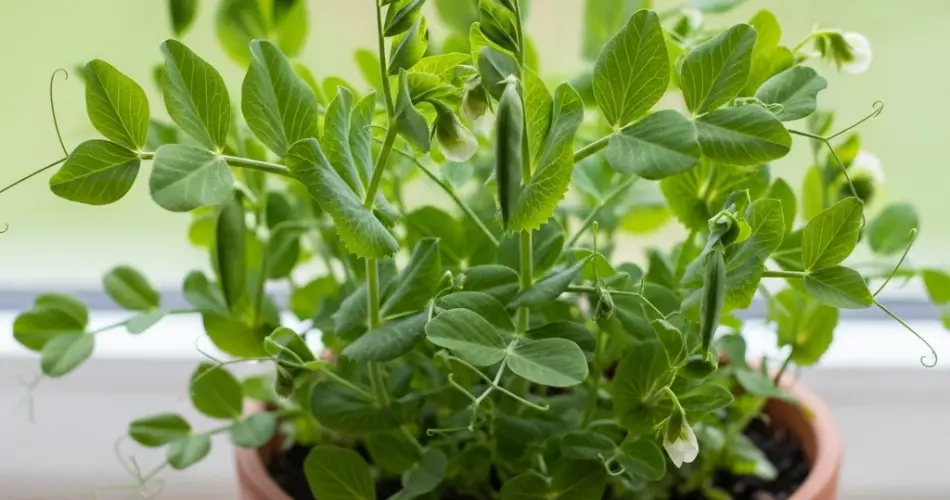Fresh, tender peas are one of the first joys of spring gardening—and you don’t need a backyard to enjoy them. With just a pot, some soil, and a sunny corner, you can grow your own crisp, sweet peas right at home. Whether you have a balcony, rooftop, or sunny windowsill, growing peas in containers is an easy, rewarding project even for beginner gardeners.
Here’s a detailed guide on how to grow spring peas in pots and enjoy a homegrown harvest in just a few weeks.
Why Grow Peas in Pots?
Peas are cool-season vegetables that don’t need deep soil or complex care. This makes them a perfect crop for pots and containers. Here’s why they work well in small spaces:
-
Fast-growing: Most pea varieties are ready to harvest in 60–70 days.
-
Compact root systems: Peas don’t need a deep pot and do well in shallow containers.
-
Early harvest: Peas are one of the first vegetables to be planted and harvested in the growing season.
-
Minimal maintenance: They thrive with regular watering, sunlight, and a little support.
Growing peas in pots allows for easier control over soil quality, watering, and pest management—ideal for small-space or urban gardeners.
Choosing the Right Type of Peas
There are three main types of peas you can grow in pots:
-
Shelling peas (garden peas): These produce peas that must be removed from the pods before eating.
-
Snap peas: These sweet, crunchy peas are eaten pod and all—great for snacking and stir-fries.
-
Snow peas: These flat pods are harvested early and are a staple in many Asian dishes.
For containers, compact or dwarf varieties work best. Look for types labeled “bush,” “container,” or “patio” for smaller growth habits. Some recommended varieties include ‘Little Marvel’ (shelling), ‘Sugar Ann’ (snap), and ‘Oregon Sugar Pod’ (snow).
Selecting a Suitable Container
Peas don’t need deep pots, but they do need enough room for roots and airflow. Here are the best container features:
-
Size: Choose a container at least 8–10 inches deep and wide. Longer rectangular containers are excellent for multiple plants.
-
Drainage: The pot must have drainage holes to prevent soggy soil and root rot.
-
Material: Plastic, ceramic, fabric grow bags, or recycled containers all work, as long as they drain well.
If growing climbing peas, make sure the container is sturdy enough to support a trellis or frame.
Preparing the Soil Mix
Peas prefer well-draining, fertile soil. Use a high-quality potting mix enriched with organic compost. Avoid garden soil, which can be heavy and compact in pots.
Suggested mix:
-
60% potting mix
-
30% compost or worm castings
-
10% perlite or coconut coir for improved drainage
Avoid nitrogen-rich fertilizers, as too much nitrogen promotes leafy growth instead of pods.
Planting Your Peas
Peas grow best when direct-sown rather than transplanted. Follow these steps for a successful planting:
-
Fill the pot with your prepared soil mix.
-
Sow seeds about 1 inch deep and 2 inches apart in rows.
-
Water thoroughly but gently.
-
If growing climbing types, insert a trellis, stakes, or mesh at planting time.
-
Place the pot in a location that receives at least 6 hours of sunlight daily.
Peas can germinate in cool soil (as low as 45°F / 7°C), so you can plant them early in the season.
Caring for Container Peas
Peas are fairly low-maintenance but benefit from consistent care:
-
Watering: Keep the soil evenly moist. Don’t let it dry out, especially when flowers and pods are forming.
-
Sunlight: Peas prefer full sun but can tolerate partial shade in warmer climates.
-
Feeding: Peas typically don’t need extra fertilizer. A monthly dose of diluted liquid compost tea can help boost growth without overfeeding.
-
Support: Even short pea varieties may need light support. Use bamboo sticks, netting, or a small trellis to help vines climb and prevent damage.
Harvesting Peas
Depending on the variety, peas are ready for harvest around 60–70 days after sowing. Here’s how to harvest properly:
-
Shelling peas: Pods should be plump and firm, with visible bumps from the peas inside.
-
Snap peas: Harvest when pods are swollen but still tender.
-
Snow peas: Pick when pods are flat and before the peas inside swell.
Use scissors or pinch pods off gently to avoid tearing the plant. Check for new pods daily, as frequent harvesting encourages more growth.
Extending the Season
In cooler climates, peas can be planted early in spring and again in late summer for a fall harvest. In tropical or subtropical zones, they grow best during the cooler, dry months. For continued production, sow new seeds every 2–3 weeks during the growing season.
Final Thoughts
Container-grown peas are a delightful addition to any small-space garden. Their tender flavor and crisp texture taste best right after harvest, making them a rewarding crop to grow at home. Whether you’re a seasoned gardener or just starting out, spring peas in a pot offer a low-effort, high-reward way to bring fresh food to your table.
With a little sunshine, water, and care, your container peas will reward you with handfuls of sweet, homegrown pods to enjoy.



